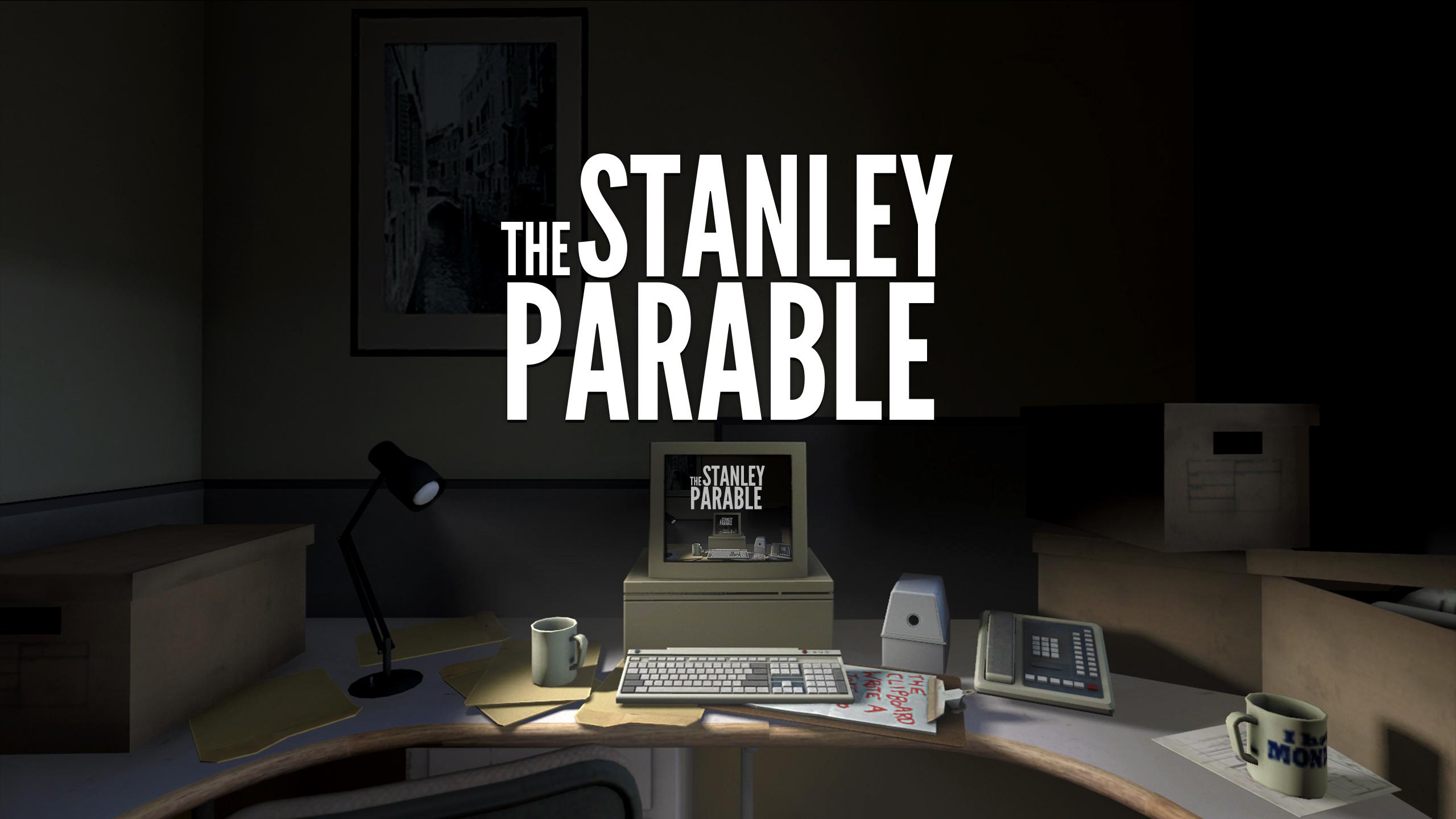The Stanley Parable is a walking simulator game that is available for Windows, Mac, and Linux computers. Its dry, sarcastic humor and existential themes probably make it a game best for young adults and older. This game has been on my radar for a while, though I had never played. It shares many elements with a traditional plot: a mysterious scenario, a sassy narrator, and even a named main character, the titular Stanley. This provides a certain linearity in structure; some may liken it to “on-rail” plots told by books or movies. However, the structure is precisely what allows The Stanley Parable to provide a vaster experience. As a walking simulator, the game provides the player with three critical resources: agency, space, and time. The interplay between these, tied together by the simple act of walking, construct a uniquely immersive story that is “experienced” more than “told.”

Agency characterizes walking simulators by allowing the player to go as they please. And though the narrator is telling Stanley where he should be going, the player can choose to defect. I recall walking up to my first choice in the game, the narrator politely relayed that I would be going in the door on the left. Obviously, that meant I walked to the right to spurn the narrative for placing restrictions upon me. Mechanically simple, but narratively subversive.

This is wholly distinct from traditional narrative, as I’d never spurn a narrator for telling me what happened in a book or movie. In a walking simulator, however, there are considerably less mechanisms at play, and so where I walk is pretty much all I have. In The Stanley Parable, I could express myself by even dissenting from the narrator’s choice, which not only changed the trajectory of the story (in a literal sense) but also challenged this idea of the story being “told” at all. In particular, it felt like I was making it because I was the one walking.
This agency is pronounced in the context of space and time. There are many spaces to visit in The Stanley Parable. Even just the office, there were wide rooms with computers I could clickity-clack if I chose. Very importantly, there’s also much time to explore these areas. Of course, the narrator often chastised me for not moving the plot along, but I was content to spend as much time as possible in the environments set up for me. Implicitly, I was making a choice not to continue the plot. This, again, diverges from traditional narrative in books, movies, or even more strictly linear video games with time limits. Their sequences of events happen in a particular order in particular places with specific amounts of time. The game was very reminiscent of walking in real life. Assuming you have nowhere to be, you can just look around, take in the scenery around you, and leave at your leisure.
With the pace of the scenario at my whim and the choices I could make against the “correct path” helped me lose myself for a bit. I wasn’t sitting in my dorm room late at night, I was inspecting an office. And when I felt it right, I mosied through a few doors and explored this crazy “mind control facility” and pushed every button I could get my hands on. This wasn’t because I was asked to but because I wanted to. And though this was facilitated with a simple mechanic, walking, a vast enough space and enough freedom allows the player to experience a story that’s theirs. And in The Stanley Parable, it makes for a crazy one.





